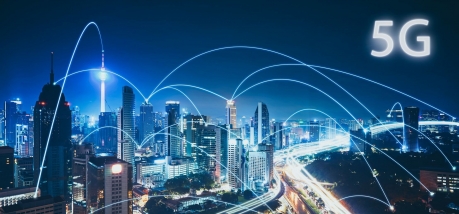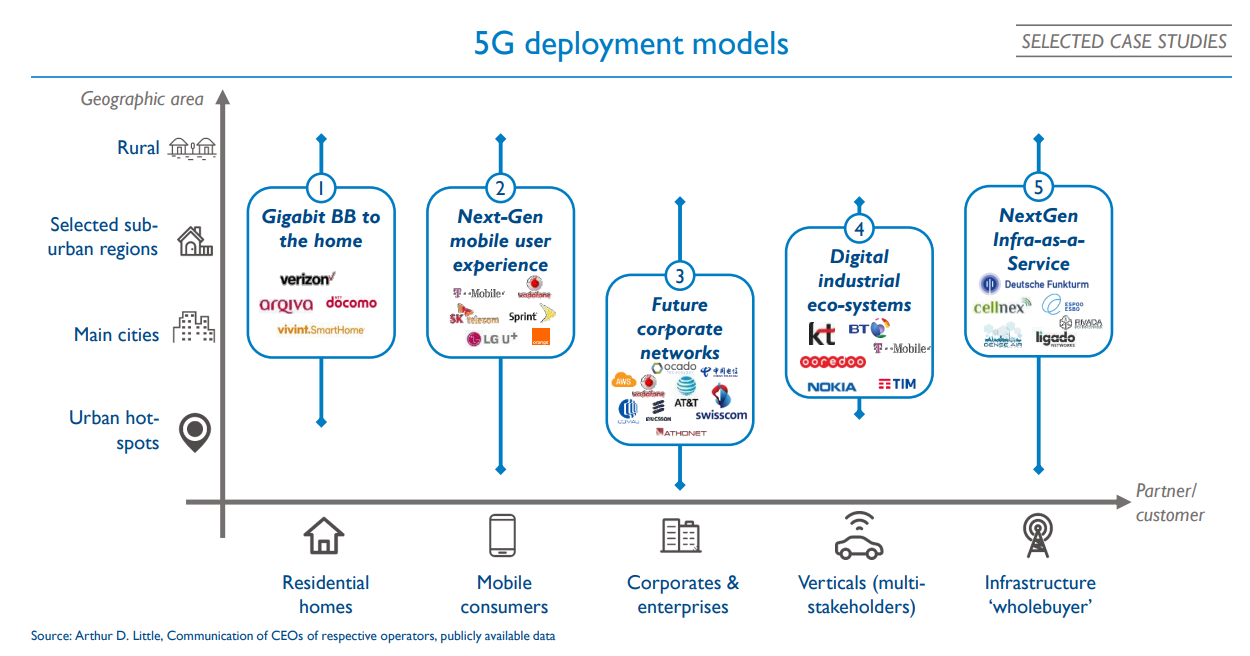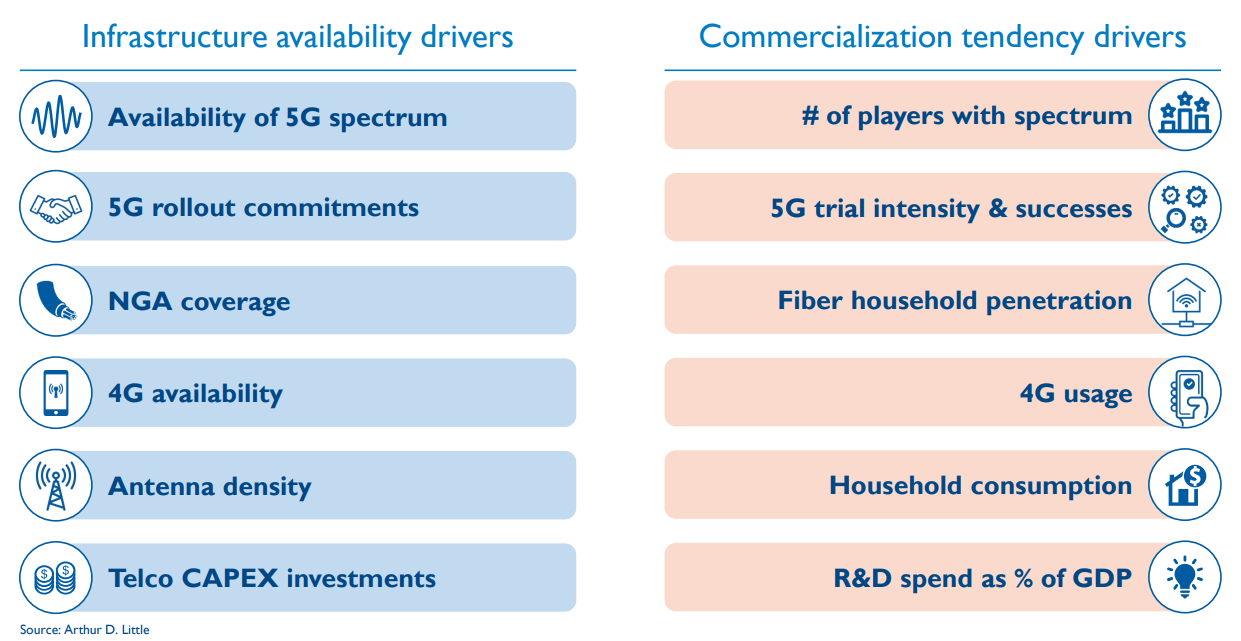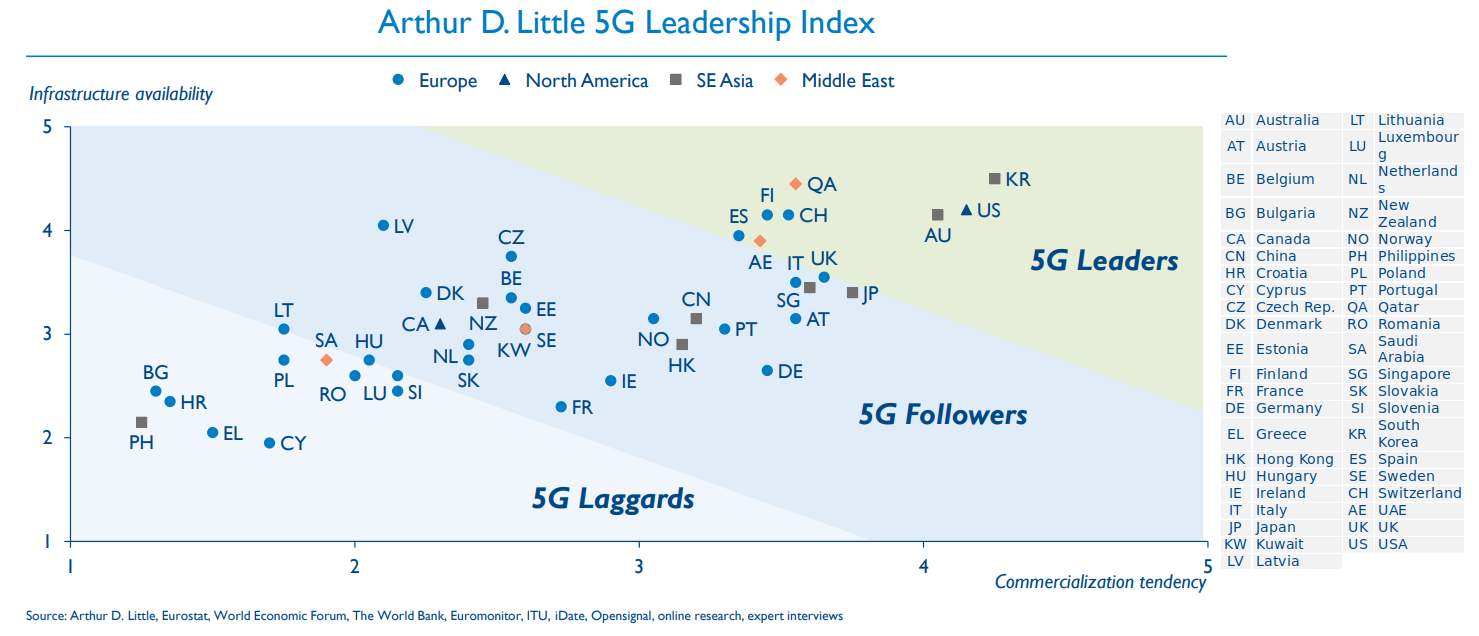The race to 5G


Executive Summary
5G will soon become widely available, as first movers have already launched commercial 5G networks. In addition, operators have already launched business models consistent with Arthur D. Little’s five 5G deployment models, which were anticipated in 2017. Operators’ current efforts indicate that “gigabit broadband to the home”, “future corporate networks”, and “digital industrial ecosystems” have been the biggest drivers for accelerated 5G deployment thus far. We expect the next-gen mobile user experience driven by 5G to accelerate towards the second half of 2019.
Operators have launched various pilots and will start commercialization soon in all 5G deployment models, as anticipated by Arthur D. Little in 2017

During the 2019 Mobile World Congress, there was again a strong focus on 5G, with numerous announcements regarding individual operators’ pilots, partnerships and devices. However, there has been little transparency on individual countries’ actual 5G advancements. To address this, ADL developed its Global 5G Leadership Index to identify the leading 5G nations across two dimensions – infrastructure and level of commercialization.
The Arthur D. Little 5G Leadership Index covers 12 categories across two dimensions and assesses over 40 countries globally

By assessing more than 40 countries globally, we have identified South Korea as the clear leader in the race to 5G, followed by the US. Regionally, Asia-Pacific appears the most advanced, while the US has more operators involved in 5G and is among the first to launch commercial services. Gulf Cooperation Council (GCC) countries are also jockeying for the lead, while Europe generally lags due to heterogeneous infrastructure and fragmentation, as well as unresolved spectrum allocations, given that auction processes are still ongoing in many countries.
Leading countries have both the required technical infrastructure for 5G rollout and a strong tendency towards commercialization

All leading countries have in common that they have already allocated 5G spectrum. These countries have enabled operators to roll out 5G networks quickly, many commercially, in 2018, and to trial use cases successfully. Markets with high-performance backhaul infrastructure rate higher, as this capability allows them to roll out 5G faster. Finally, countries demonstrating high tendency to adopt new services, as well as with operators and private enterprises pushing for 5G-enabled digital use cases, are more advanced.
The competition for 5G leadership will further increase in 2019, with dozens of commercial network launches expected worldwide, enabled by new spectrum allocations.
The race is on!
DOWNLOAD THE FULL REPORT
The race to 5G

DATE

Executive Summary
5G will soon become widely available, as first movers have already launched commercial 5G networks. In addition, operators have already launched business models consistent with Arthur D. Little’s five 5G deployment models, which were anticipated in 2017. Operators’ current efforts indicate that “gigabit broadband to the home”, “future corporate networks”, and “digital industrial ecosystems” have been the biggest drivers for accelerated 5G deployment thus far. We expect the next-gen mobile user experience driven by 5G to accelerate towards the second half of 2019.
Operators have launched various pilots and will start commercialization soon in all 5G deployment models, as anticipated by Arthur D. Little in 2017

During the 2019 Mobile World Congress, there was again a strong focus on 5G, with numerous announcements regarding individual operators’ pilots, partnerships and devices. However, there has been little transparency on individual countries’ actual 5G advancements. To address this, ADL developed its Global 5G Leadership Index to identify the leading 5G nations across two dimensions – infrastructure and level of commercialization.
The Arthur D. Little 5G Leadership Index covers 12 categories across two dimensions and assesses over 40 countries globally

By assessing more than 40 countries globally, we have identified South Korea as the clear leader in the race to 5G, followed by the US. Regionally, Asia-Pacific appears the most advanced, while the US has more operators involved in 5G and is among the first to launch commercial services. Gulf Cooperation Council (GCC) countries are also jockeying for the lead, while Europe generally lags due to heterogeneous infrastructure and fragmentation, as well as unresolved spectrum allocations, given that auction processes are still ongoing in many countries.
Leading countries have both the required technical infrastructure for 5G rollout and a strong tendency towards commercialization

All leading countries have in common that they have already allocated 5G spectrum. These countries have enabled operators to roll out 5G networks quickly, many commercially, in 2018, and to trial use cases successfully. Markets with high-performance backhaul infrastructure rate higher, as this capability allows them to roll out 5G faster. Finally, countries demonstrating high tendency to adopt new services, as well as with operators and private enterprises pushing for 5G-enabled digital use cases, are more advanced.
The competition for 5G leadership will further increase in 2019, with dozens of commercial network launches expected worldwide, enabled by new spectrum allocations.
The race is on!
DOWNLOAD THE FULL REPORT
